Okinawa, the Reluctant Paradise
Letters from Japan, June/July 2025: a trip to Kerama Islands, arguably the best waters in the world, a tragic history, and a little arrogant, yet strangely admirable approach to summer.
Good morning,
We’re in the midst of a strange weather phenomenon in Tokyo. In a country with an exceptionally rich menu of weather events, one that has shown me the limits of my meteorological vocabulary and shaken my 40-year understanding of what good weather actually means, this feels like the strangest yet: a cool breeze in the middle of July. Mild by nature and even ordinary for some regions, but one reportedly not observed in Tokyo during summer since 1921.1 I’ll forever remember this day, air conditioners off, windows open, curtains dancing in the breeze, as one of my fondest summer memories in Tokyo.
My dramatic reaction to this rare spell of cool Tokyo weather, which might actually come across as not enthusiastic enough to anyone who had the great misfortune of spending a summer day in Tokyo, undoubtedly also has something to do with where I was last weekend: the Kerama Islands of Okinawa.
The group of four inhabited islands, Tokashiki, Zamami, Aka, and Geruma, along with the many uninhabited islets scattered in between, introduced me to a kind of heat so intense that I lost all faith in Uniqlo’s Airism line after just a brief walk to the beach, and to a sun so sharp that I ended up with a not-so-minor lobster leg situation after only an hour of kayaking, even with SPF 50.2 3
And yet, despite the hazards, it was also the kind of heat you easily forgive Okinawa for, with a level of grace never extended to Tokyo for its brutal summers, thanks to the city`s simple but unforgivable failure of not being surrounded by waters so otherworldly that a new word was needed to describe them.
Turquoise blue, baby blue, crystal blue, aqua blue, indigo - none of these were apparently enough to capture the unique vividness of the waters surrounding the Kerama Islands, so they coined a new term: “Kerama Blue”. A term that may at first sound like a promotional trick, and not even a particularly imaginative one, until you actually experience those waters. The kind of waters that leave you with a shamefully hedonistic dilemma: which is more satisfying, diving into them, or watching them from high above?
On a blue-sky day, the scenery on Tokashiki,4 with its perfectly balanced color palette and just the right contrast between the ocean and the lush hills that surround it, feels like something out of an anime, dreamed up by an artist almost mocking us with a glimpse of a perfect island world that could never exist. Or it’s like the opening shot of a disaster movie, where the scenery is so deceptively picture-perfect that, even though you know something terrible is about to happen (and that is the whole point of the movie), you still wish the film would linger just a little longer in that flawless world, or better yet, be all about it.
Yet there’s something even greater about the Kerama Islands than the perfect scenery or those gorgeous waters that could easily give the Mediterranean, the Caribbean, or even the Andaman Sea a run for their money: the simple fact that the islands themselves don’t seem to care about their own greateness, at least not from a typical tourism perspective. There’s something convincingly unpretentious about the Keramas, which I would describe as the least “summer resort-y” summer resort I’ve ever been to.
It’s not the kind of island destination that works relentlessly to deliver our long-earned, deeply desired summer break, with all the pre-defined expectations that come with it. The Keramas, particularly Tokashiki, give you some of the world’s best waters,5 but other than that, you are pretty much on your own.
It’s quite unlike your typical summer town, where so much is thrown at you, chill-out music, beachside or even in-the-water service, countless eateries, colorful decorative choices that have little to do with the place itself, that you almost feel obliged to feel explosively joyful in that way unique to summer, so soon after the hopeful renewal we’re all expected to embrace in spring.
Home to only 700 residents, the summer visitors, the number of which easily matches the number of residents on any given summer day, are, of course, a crucial source of revenue for Tokashiki. Still, you get a strong sense that the locals don’t go out of their way to shape the island and the experience it offers around the standards typically expected from tropical paradises. Life on the island goes on as usual, and you’re welcome to tag along, as long as you're fine with the limitations.
This unbothered approach is to such a degree that you sometimes secretly wish the islands acted just a little more like a classic resort town, so that coming across a food cart on a relatively popular beach, one that actually serves drinks and snacks, didn’t feel like discovering an oasis. Dining options weren’t limited to just two venues: one offering a selection of three dishes, the other resembling a factory refectory (windowless, no less), despite the food being exceptionally tasty. Maybe even one of those modern machines called ATMs, which give you money (if you actually have some), could be added to both of the island’s commercial hubs, not just one. Nothing fancy, just a tiny bit more, so the experience feels less like a summer sports camp, where failing to stick to a strict schedule, or ending up in the wrong part of the island, might mean going to bed hungry.
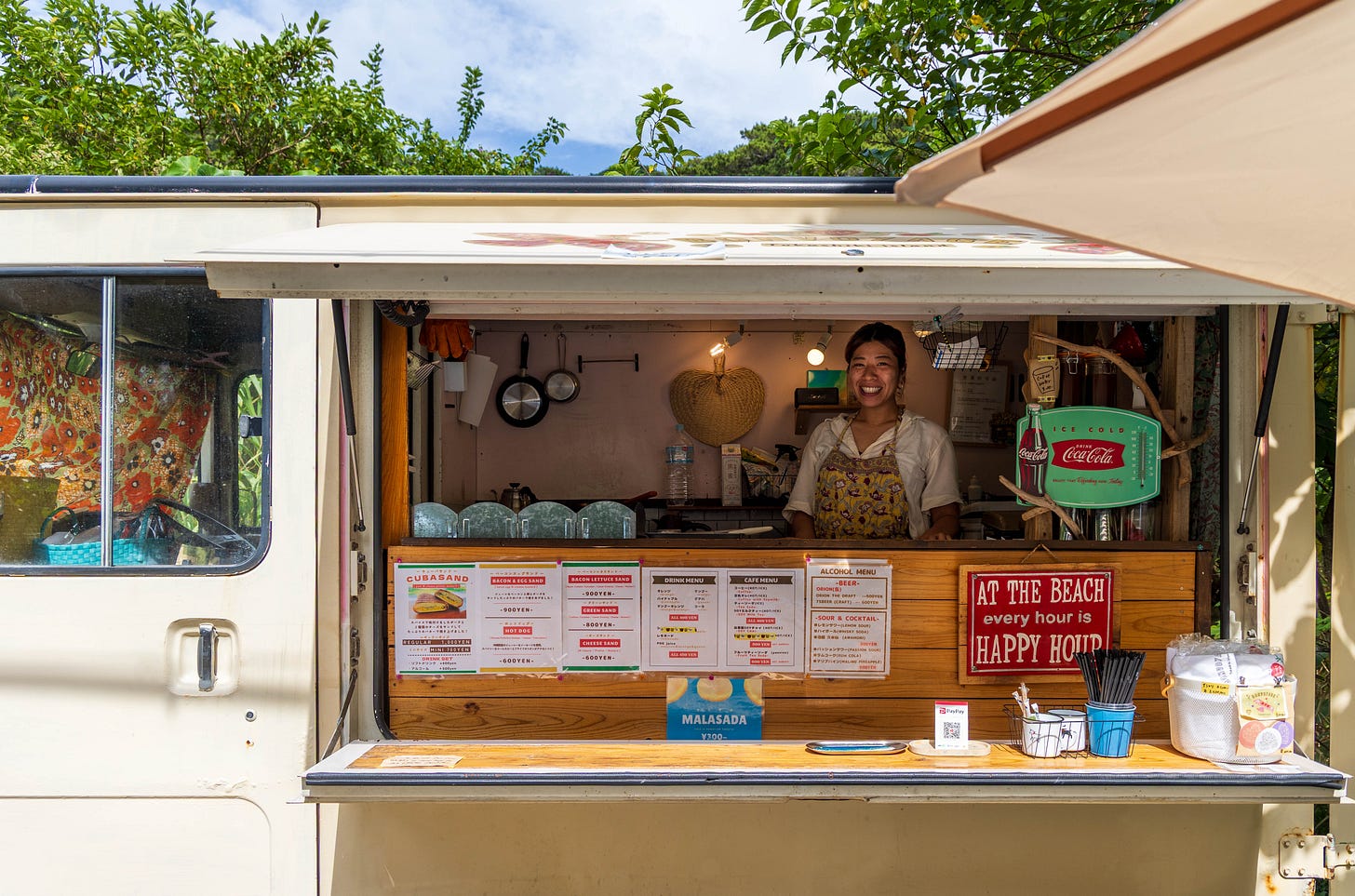
Still, in a radical departure from my very willing participation in many highly indulgent Aegean and Mediterranean summers in the past, and despite being from a country with arguably the least moderate approach to the season and its pleasures (complete with the three-month-long nationwide state of delirium that comes with it), I am, at this age, a little more attuned to Tokashiki’s almost slightly arrogant, no-big-deal attitude toward summer.
In addition to its low-key approach to summer wonders that many other destinations would die for, Tokashiki also carries a less easily defined, but immediately felt, sense of detachment, even though it's just a 30-minute boat ride from Naha.6 Even on a gloriously sunny July day, during the busiest stretch of summer, you don’t have to push your imagination too hard to relate to the feeling of isolation one might experience on the island in other seasons, a feeling poignantly depicted in Tami Sakiyama’s short story Island of Confinement (though with reference to another small Okinawa island.7)
Sakiyama`s story gives us an insight into the experience of an outsider (considered as such even though she was born on a neighboring island) who returns to a small Okinawan island where she once considered settling through marriage. The reflections that she shares during her short trip challenge the romantic notions we tend to attach to island life, but also raise the unsettling idea that these islands can make it almost impossible to leave once you’ve arrived, leaving you with an unshakeable sense of alienation in every other place you go.
The architectural choices on the islands also contribute to this strange, and at times a little cold, atmosphere of isolation and confinement. Instead of pre-war Okinawan architecture, characterized by wooden structures, red-tiled roofs, and coral-limestone walls surrounding gardens and homes, unpainted concrete buildings dominate the island`s townscape.
But, this is a choice not so easy to criticize, given the islands’ extreme vulnerability to typhoons as Japan’s first point of contact. The islands of Okinawa are often hit when typhoons are at their strongest, which typically weaken by the time they move on to the mainland. This seasonally constant typhoon exposure, as I understand it, makes other materials less practical, and painting largely a futile endeavor.
The islands’ vulnerability as Japan’s frontline is evident not only in their exposure to typhoons but also in the historical events that continue to shape their culture and relationship with mainland Japan. Most notably, Okinawa was the site of one of the deadliest battles between Japan and the United States during World War II.
The Battle of Okinawa, which lasted three months in 1945, 68 years after Okinawa became part of Japan following the end of the Ryukyu Kingdom, left behind widespread destruction and tragedy, with hundreds of thousands of deaths. Tokashiki and Zamami were not spared.
One of the most horrifying human tragedies on these two Kerama Islands was the mass suicides of civilians to avoid capture. Some argue, including the Japanese government, that these suicides were the result of the residents’ own free will, while other sources strongly suggest that there were Japanese military orders or pressure to do so, naming the tragedy “compulsory mass suicide”.
Today, in addition to periodic commemorative events, there are memorials on both Zamami and Tokashiki Islands built to remember those who lost their lives. I once hiked up to the exact site where the event occurred on Tokashiki, now home to a stone monument in memory. It was a haunting visit, but one that felt very necessary.
So, there’s a certain darkness beneath the dazzling beauty of the Kerama Islands, reflected not only in the architectural contrasts that challenge the serenity of the surrounding natural landscape, or in the sense of isolation I always find intriguing, but also in a tragic history and a deeply rooted cultural vulnerability. Perhaps that, too, contributes to the islands’ unassuming approach to life, something often associated with island communities, but which, in the case of the Keramas, feels truly hard-earned and unmistakably genuine, evident in their admirable restraint against the tempting urge to reshape themselves around our summer vacation dreams.
As always, thank you for being here.
Until next time,
Burcu
P.S. I am not sure if there is much benefit in a more travel guide style post about Kerama Islands, as the options are fairly limited, but all equally satisfying (when it comes to nature experiences). But there is still one on my website that I try to update regularly: Kerama Blue: Tokashiki and Zamami Islands.
A totally made-up statistical fact—shamelessly by me.
I now fully appreciate why Japanese people usually get in the water dressed as if they are going to a funeral, with zero skin showing, and wearing all black.
I’ve been to the islands many times before, but always in September when the weather is unbearably hot, but not mortally so.
Most of my time in the Kerama Islands is usually spent on Tokashiki, so these reflections mostly center on that island. But I’ve also visited Zamami many times, including on this trip as a day visit, as it’s home to some beautiful kayaking coves.
Along with the usual sea activities and services like kayaking, SUP, snorkeling, and diving.
Or perhaps because of it, as it doesn’t need to be as self-reliant as remoter islands like Ishigaki, which always feels a little too developed compared to Tokashiki or other Kerama Islands.
It is assumed to be Kohama Island, to the west of Iriomote.


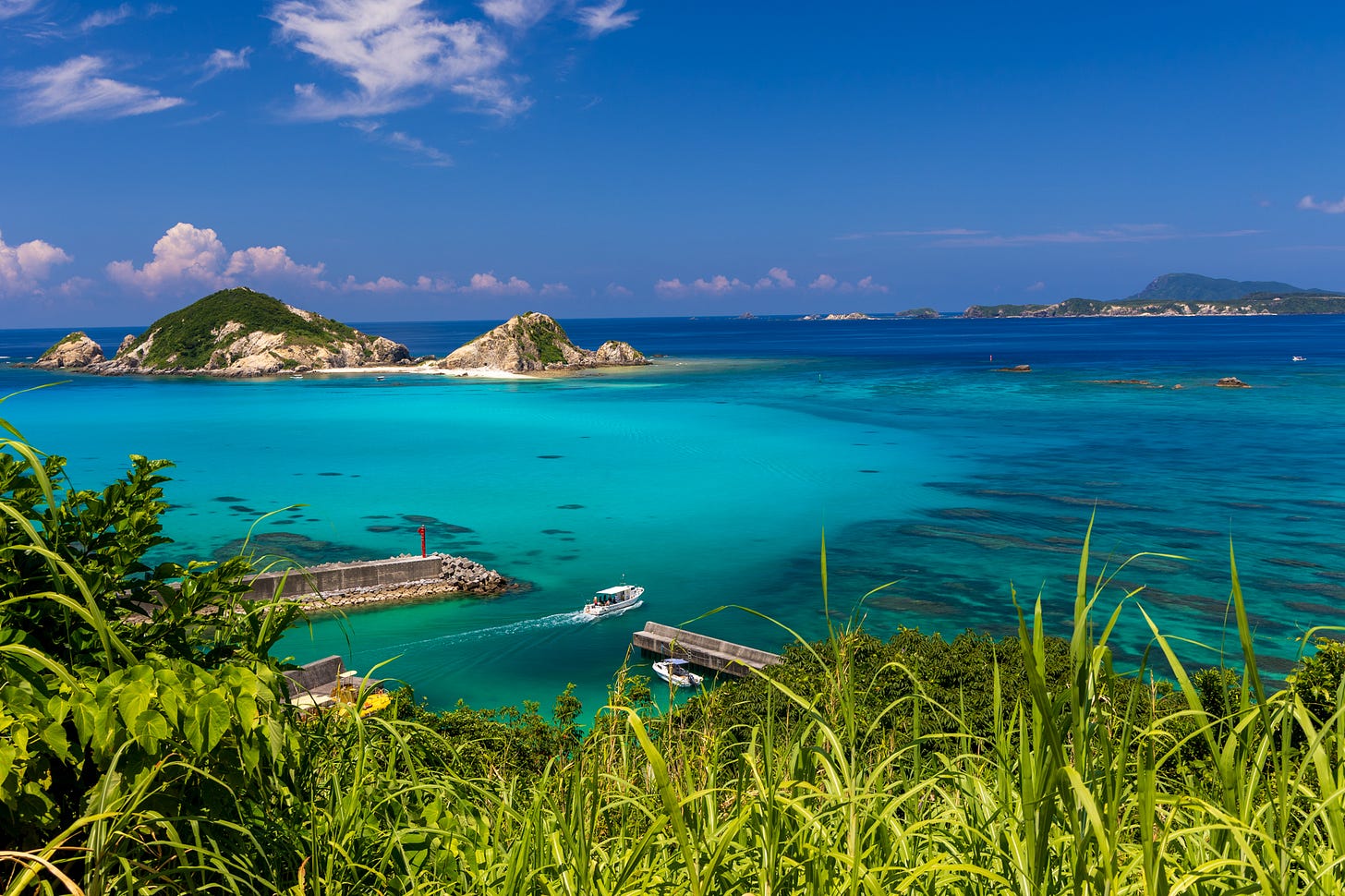
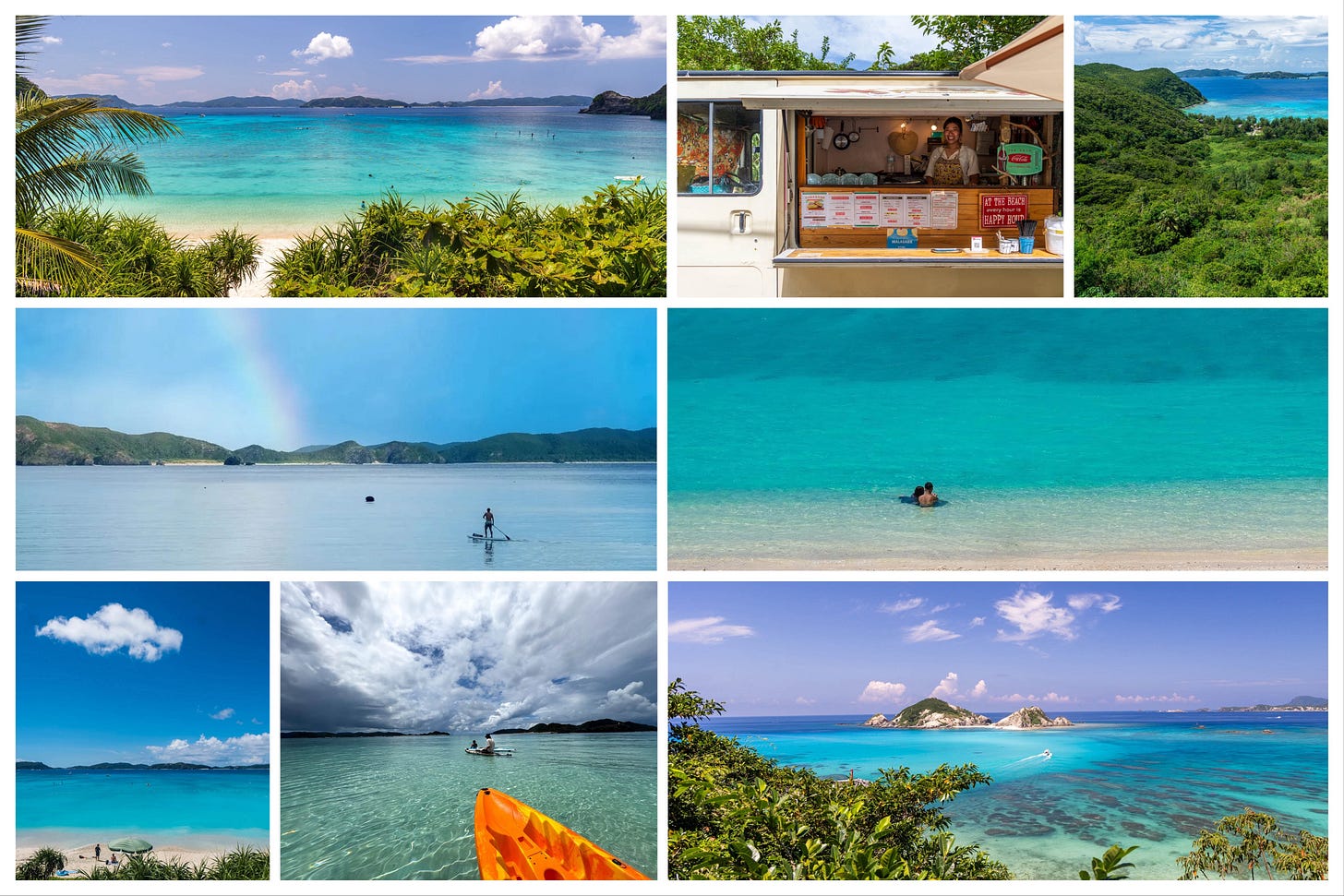
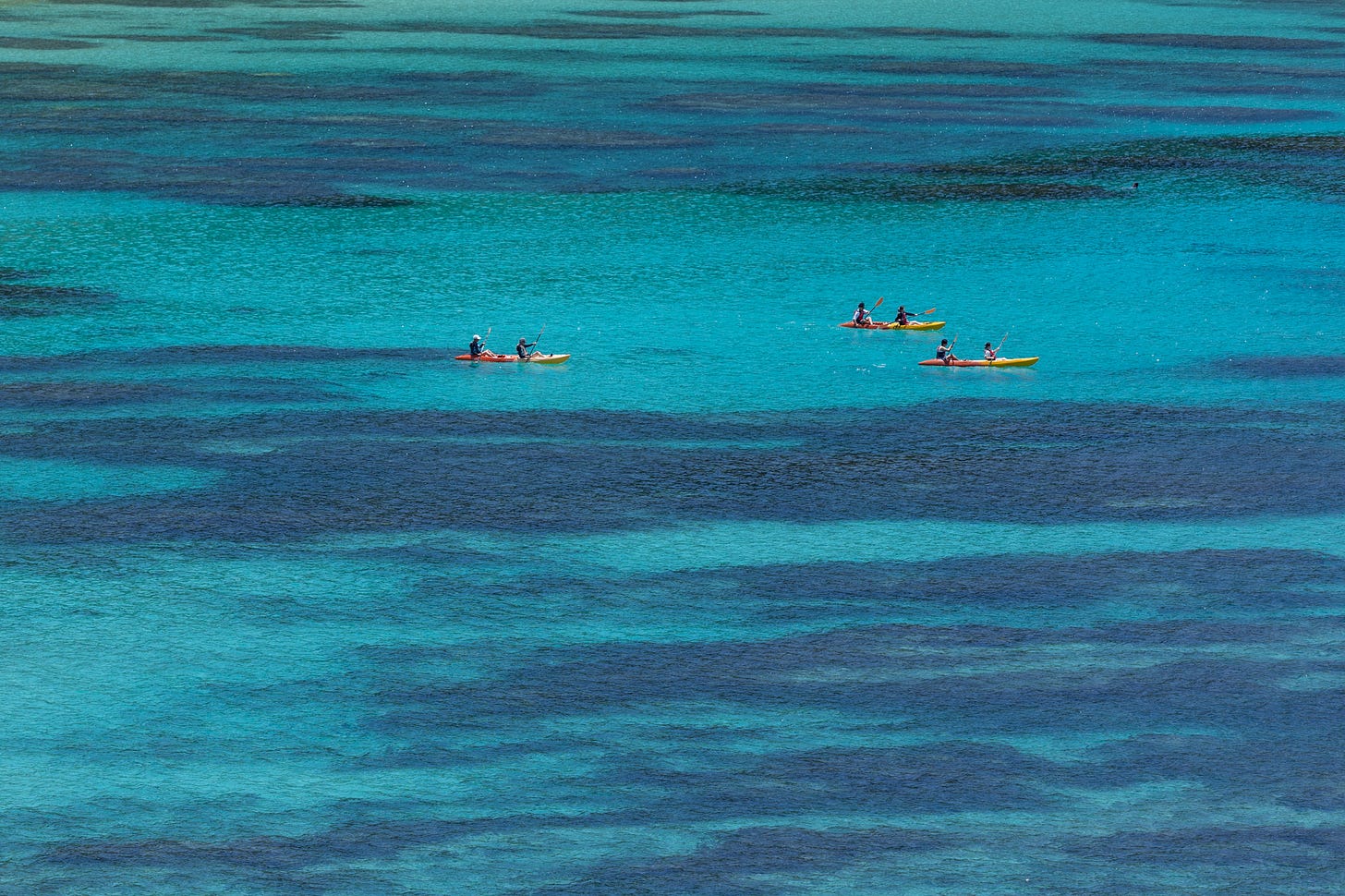
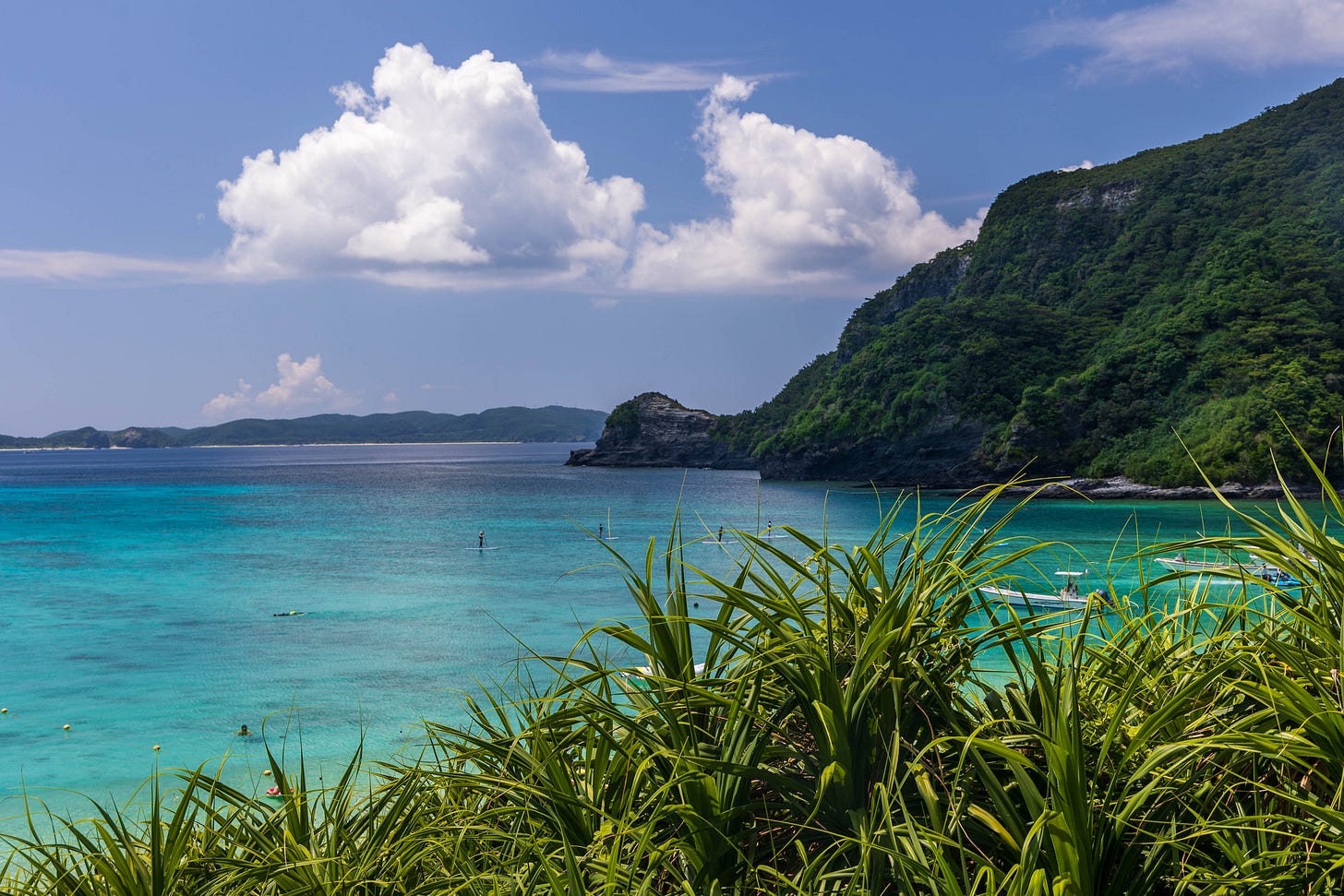
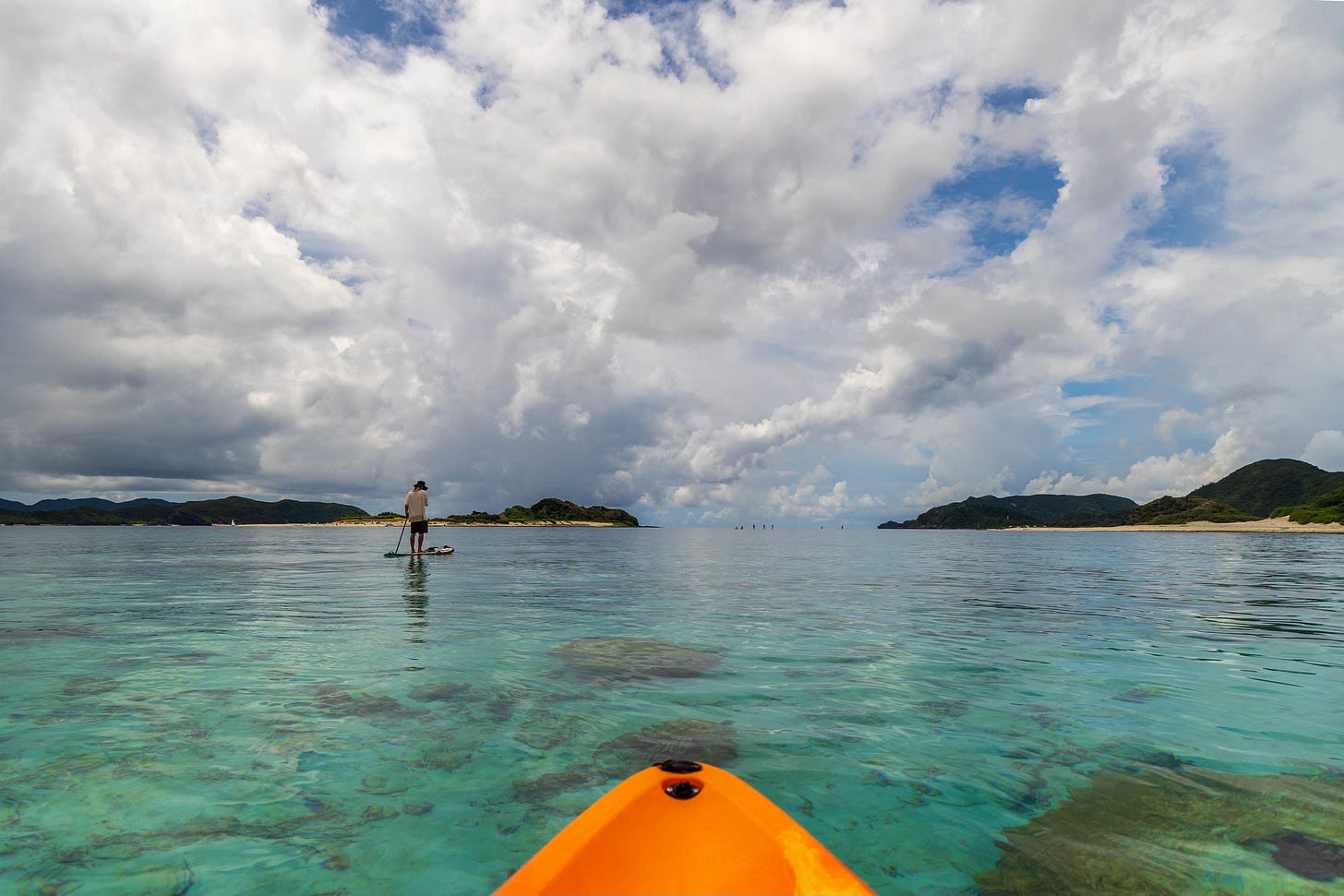
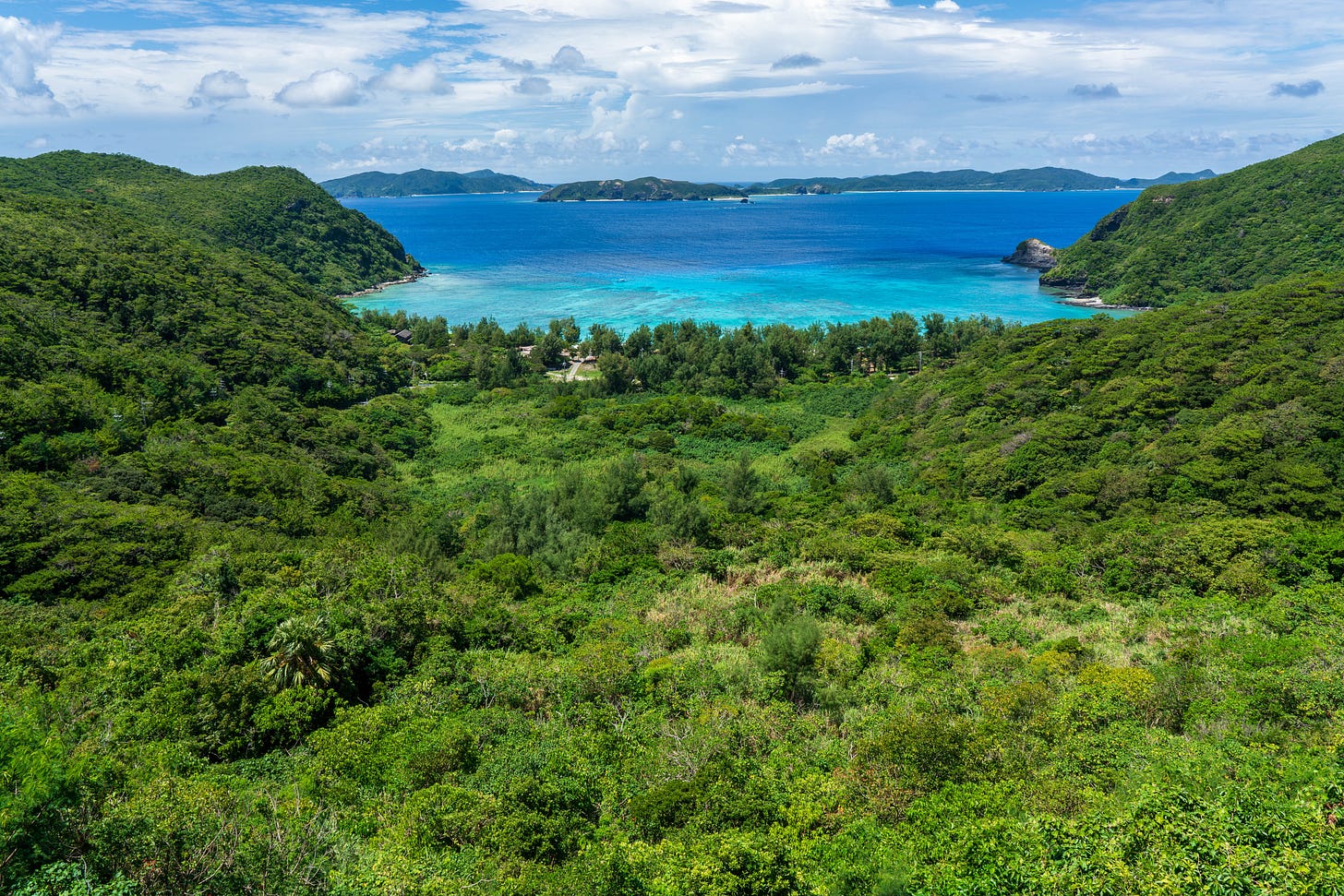

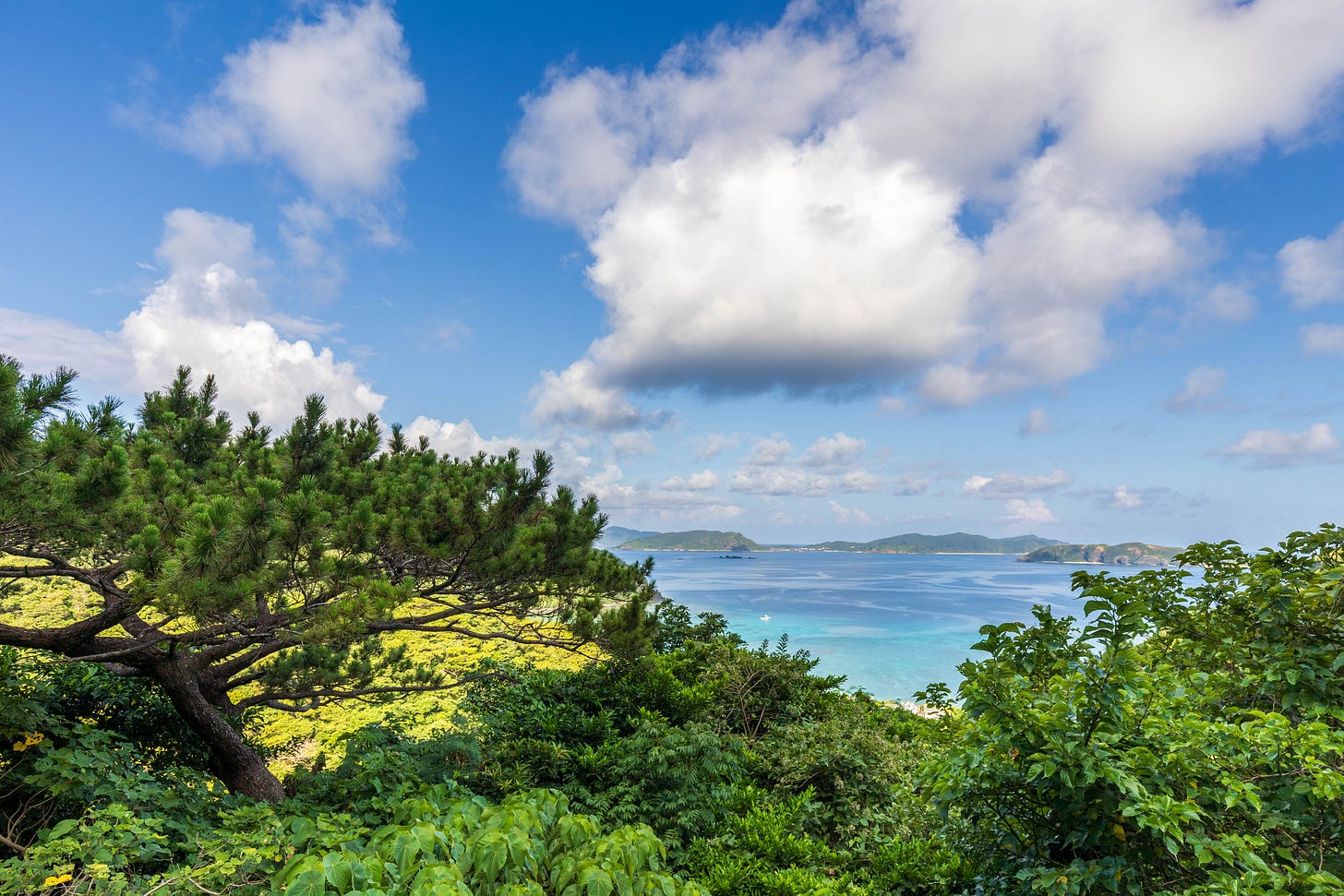
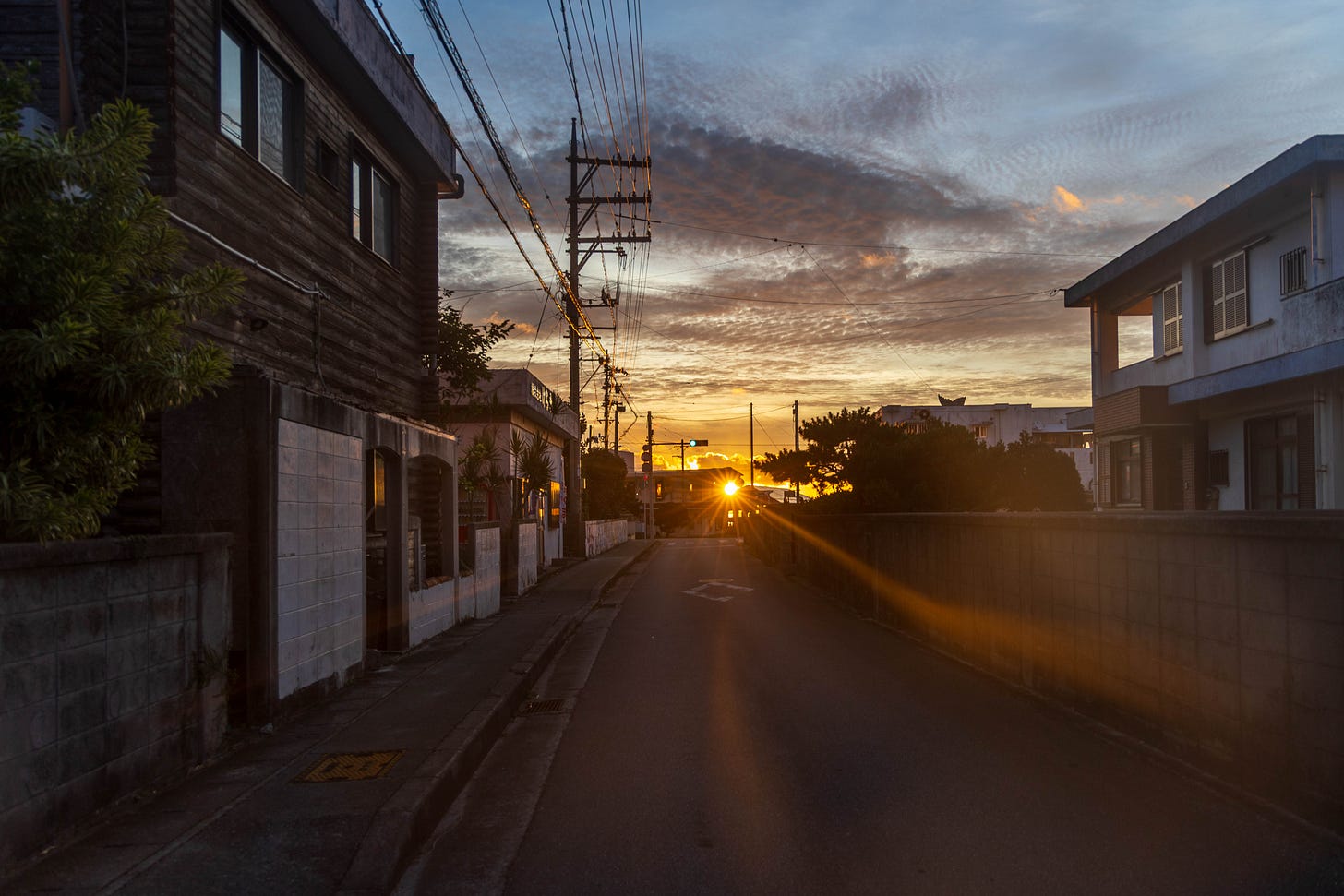
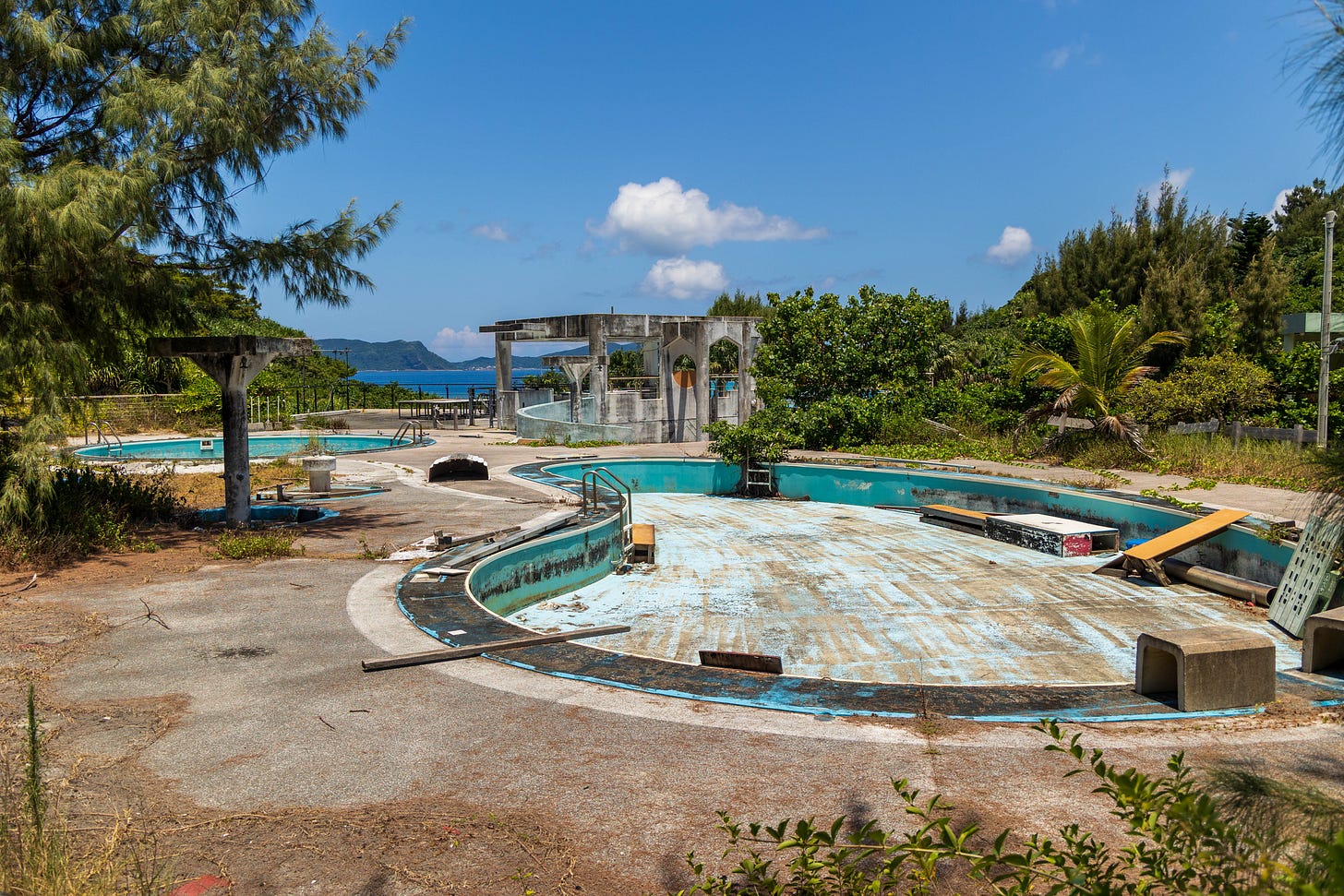
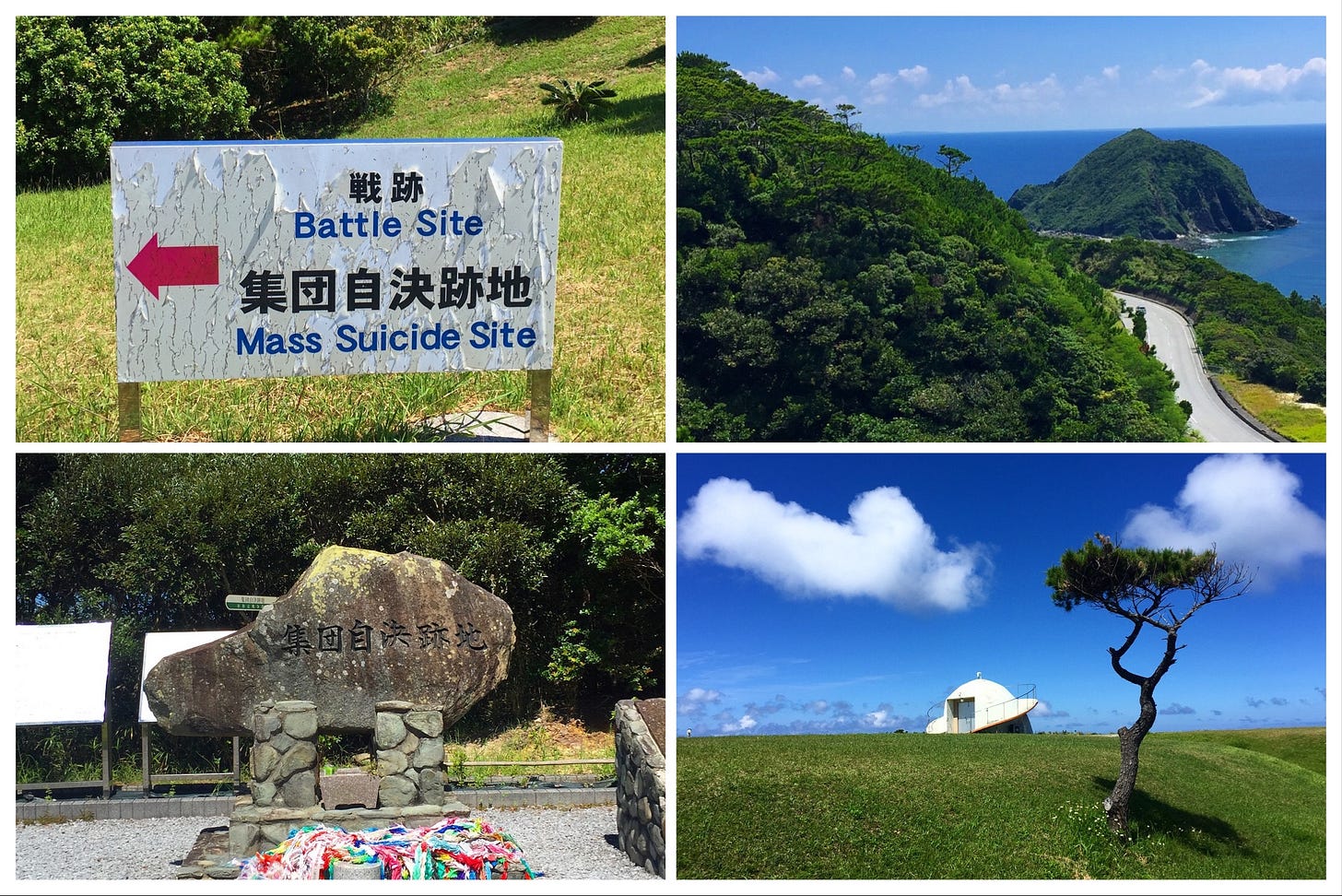
This was such a vivid glimpse, thank you. My son is about to be deployed to the USAF base on Okinawa, so I passed this along to him. Reading your reflections gave me a sense of what he might experience — both the beauty and the weight of its history.
As slow travelers ourselves, I’m struck by how much place can shape perspective, and how layers of joy and tragedy coexist in ways that leave their mark. Your piece reminded me why we keep choosing the slower path, to really see a place instead of just passing through.
I'm visiting Okinawa for the first time in September and really looking forward to it! 🙏 thank you for writing this Burcu!